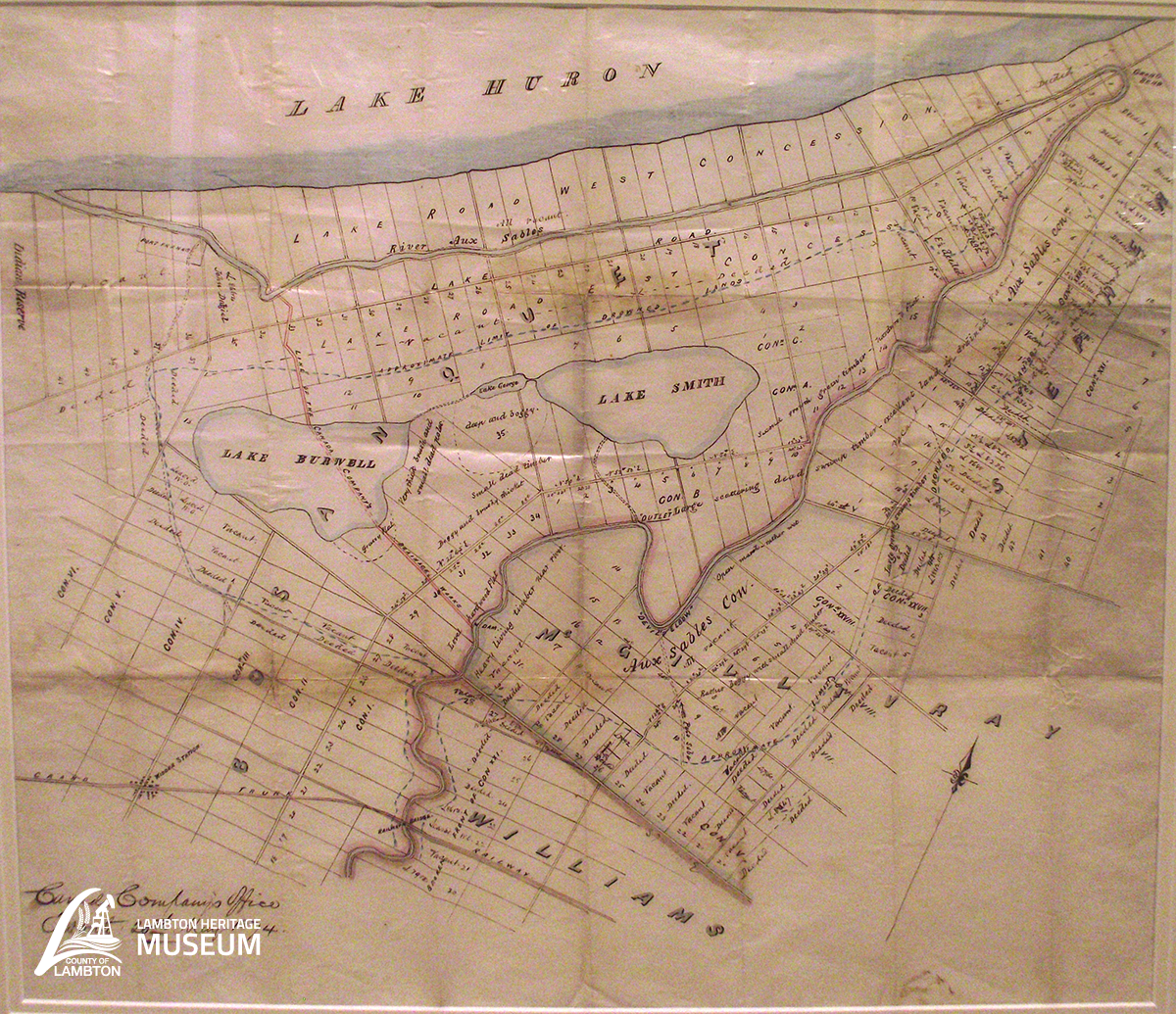Thedford Bog

This map was drafted by the Canada Company in 1874. It shows the three inland lakes that used to occupy this area.
The Thedford Bog, now prime agricultural land, was once a single huge wetland (17,000 acres), known by the early settlers as the “drowned lands’. These lands included Lake Smith, Lake George and Lake Burwell, three inland marshy lakes separated from Lake Huron by sand dunes.
Lake Smith was fed by springs and the overflow from the Ausable River. It varied in size, year to year, from 300–400 acres of open water with 600–800 acres of floating bog. It was surveyed for the Canada Company by Samuel Smith in the mid 1800’s. The Canada Company sold the larger part of the lake to the Hagmeier brothers in 1937 under the original Crown charter.
Lake Smith was always an important part of the Great Lakes bird migration flyway, providing cover and food for large numbers of waterfowl, including ducks, geese and Tundra Swans in the tens of thousands. The north part of the Lake Smith marsh was known as the Goosemarsh for this reason.
Even though the last of the bog’s rich black soil was drained for farmland in 1955, waterfowl continue to be attracted to this area. Corn lost from the previous harvest provides the hungry swans with food for their strenuous northward migration.


 Subscribe to this page
Subscribe to this page